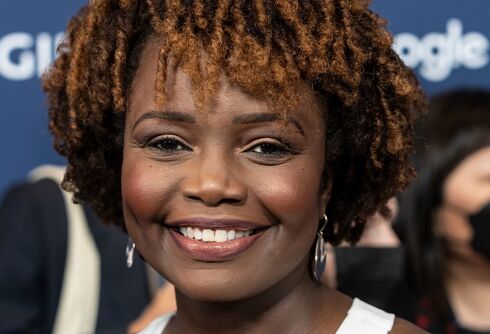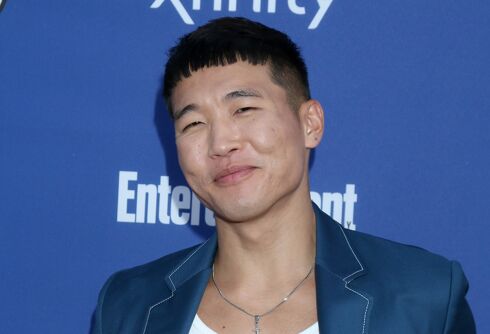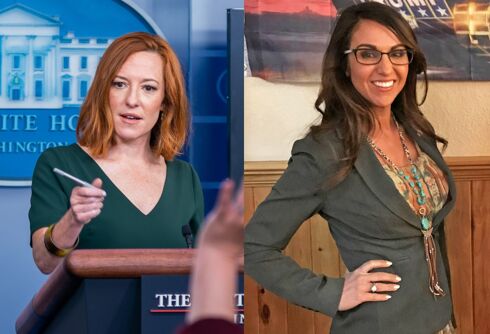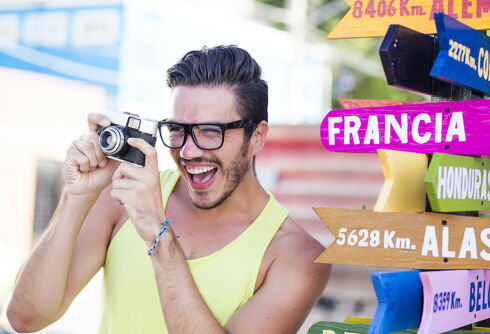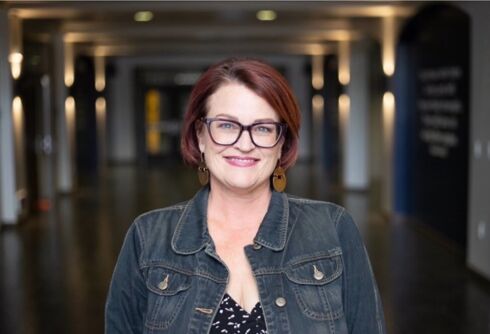NEW YORK — We may be seeing more prominent gay and lesbian characters on TV shows, but the movie industry lags well behind the small screen, according to media watchdog group GLAAD.
In its first study of LGBT roles in major studio releases, GLAAD found that compared with TV, where there has been a significant shift over the past decade, “Major studios appear reluctant to include LGBT characters in significant roles or franchises.”

This film image shows the animated character Mitch, voiced by Casey Affleck, in a scene from “ParaNorman.” The character was revealed at the end to be gay.
In its report released Wednesday, GLAAD found that of the 101 releases from Hollywood’s six major studios in 2012, just 14 included characters identified as lesbian, gay, or bisexual. Most were no more than cameos or minor roles, it said – and none of the films tracked had transgender characters.
“Until LGBT characters appear more regularly in these studio films, there will be the appearance of bias,” said Wilson Cruz, GLAAD’s national spokesperson, in an interview. He added that his organization will be meeting with studio executives to discuss the findings.
Never Miss a Beat
Subscribe to our newsletter to stay ahead of the latest LGBTQ+ political news and insights.
There were some bright spots in 2012, and some more ambiguous ones, the group said. For example, “Skyfall,” the hugely successful installment of the James Bond franchise, featured a main villain, played by Javier Bardem, who was apparently bisexual.
“It was great to see an LGBT character in such a significant role,” said Matt Kane, associate director of entertainment media at GLAAD, also in an interview. “But unfortunately the character was also devious, psychotic, and untrustworthy – it fell into that trap.”
As genre films like comic book adaptations consume much of the studios’ capital and promotional efforts, the report says, such films have a striking lack of LGBT characters. In “The Avengers,” it notes, there is a gay news anchor, but his appearance is “so brief it was likely missed by many viewers.”
The report – called the 2013 Studio Responsibility Index – rates ea ch of the six studio according to the number of LGBT-inclusive films they released. Faring worst: 20th Century Fox and Disney, which each receive “failing” grades; the other four – Paramount, Sony, Universal and Warner Bros. – receive grades of “adequate.”
Asked in advance Tuesday afternoon about the report, the studios had no immediate comment.
As part of its index, the group developed criteria to measure the quality of the LGBT roles. They included: whether a character was identifiably LGBT; whether it was not solely or predominantly defined by its sexual orientation or gender identity; and whether it was tied into the plot in such a way that its removal would have a significant effect.
One of the best examples of an LGBT-inclusive film in 2012, according to GLAAD, was, interestingly, an animated family film: “ParaNorman,” about a misunderstood boy who can communicate with the ghosts of dead people.
In the film, which came from the Portland-based st udio LAIKA, Norman’s cheerleader sister asks the hunky football hero Mitch for a movie date. He casually makes a reference to his boyfriend.
The film’s writer and co-director, Chris Butler, said the filmmakers, while determined to include the scene, had worried that it could cost them a PG rating and get them a PG-13 instead, which would have been inappropriate for the movie. In the end, they got their PG rating.
Butler said he was disappointed with some negative commentary about the scene – including one viewer’s online review that praised the film for its anti-bullying message of inclusion – but said it ruined matters by making a character gay.
“I was surprised at all the fuss,” Butler said. “But on the flip side was the positive reaction.” The movie was the first animated film nominated for a GLAAD award.
As a filmmaker, Butler said he was not optimistic that there would be an inevitable wave of more onscreen LGBT characters as time goes on and society changes, as on TV.
“It’s a mistake to assume it’s inevitable,” he said. “The only way to make change is to do something about it. It takes hard work.”
“We are moving in the right direction,” Butler said. “But not nearly quick enough. It’s not enough.”
Kane, at GLAAD, said the new report would help reinforce its longtime claims that Hollywood studios need to do more.
“Over the years we have met with studios, and it’s always a point we make,” Kane said. “Now, we have the numbers to take to them.”
This material may not be published, broadcast, rewritten, or redistributed.







